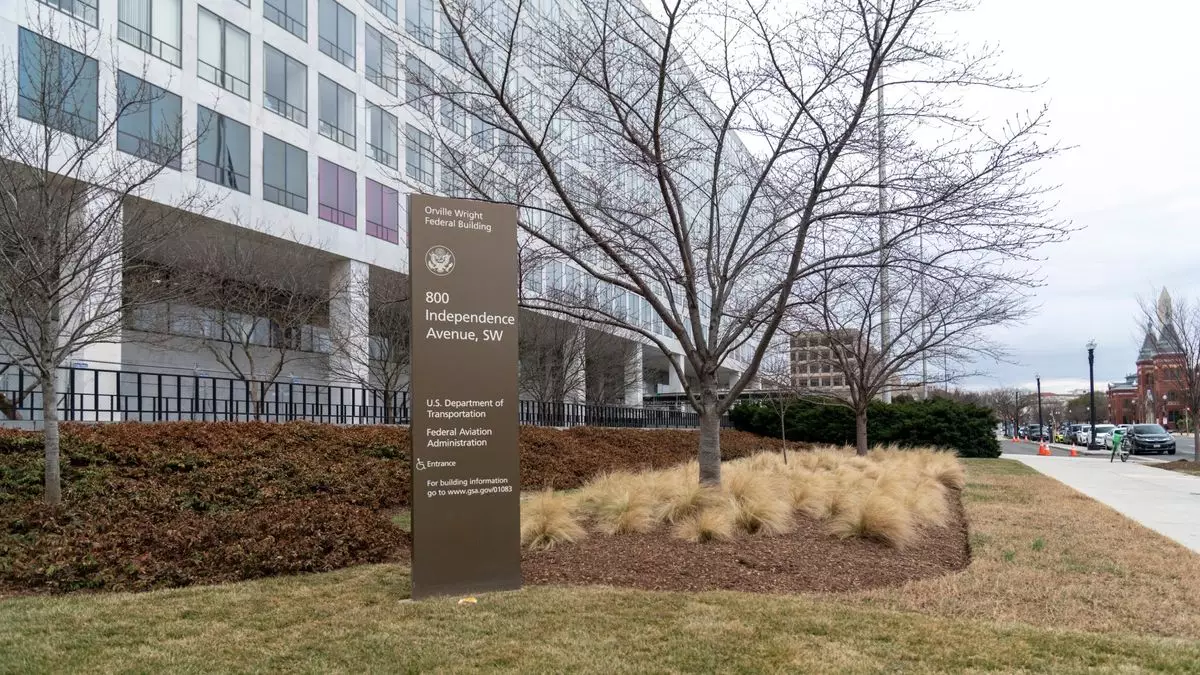In a startling move that has raised alarms among aviation safety advocates and industry professionals, officials from the Trump administration have initiated mass layoffs within the Federal Aviation Administration (FAA). This decision, which reportedly targeted hundreds of employees, seems to sidestep fundamental operational concerns about national safety and security. The implications of these terminations, particularly concerning staff involved in crucial air defense systems, could be far-reaching and troubling.
Reports emerged that late-night emails delivered the unwelcome news to several hundred probationary FAA personnel on February 14. These notifications, which evoked disbelief and dread among various employees, were communicated without prior warning or explanation regarding the criteria for their dismissal. David Spero, president of the Professional Aviation Safety Specialists (PASS) union, remarked on the abruptness of the dismissals and questioned the justification behind them.
Among those affected were employees responsible for maintaining vital aviation technologies, including radar systems essential for safe navigations. An air traffic controller, speaking anonymously, confirmed that many key maintenance personnel had been let go. Transportation Secretary Sean Duffy later attempted to ease concerns, stating that fewer than 400 employees were dismissed and that critical air traffic control positions remained intact. However, the ambiguity surrounding the classification of roles indicates potential oversight regarding what constitutes “critical” safety functions.
A closer examination reveals that various employees terminated under this policy were engaged in the development of a highly sensitive early-warning radar system for national defense, specifically designed to detect incoming threats such as cruise missiles targeting Hawaii. This project, partly financed by the Defense Department, underscores the paradoxical nature of the FAA’s actions — firing staff whose jobs are intricately linked to the nation’s security apparatus.
Charles Spitzer-Stadtlander, one of the personnel laid off, has vocally expressed his fears about the ramifications of these layoffs. As someone deeply involved in national security projects, he lamented the loss of crucial experience and institutional knowledge that could jeopardize the effectiveness of such programs. “This is about protecting national security,” Spitzer-Stadtlander asserted, urging public awareness of the potential dangers stemming from these personnel cuts.
Allegations of Political Targeting
Compounding the troubling narrative surrounding these firings is the suggestion of political bias in the terminations. Spitzer-Stadtlander speculated that his outspoken views against figures such as Elon Musk could have played a role in his abrupt dismissal. His social media activities reportedly drew attention from accounts linked to the so-called “Department of Government Efficiency,” which is an entity that has been associated with efforts to diminish federal workforce sizes.
This connection raises questions about whether the firings were tied to political affiliations or expressions of personal opinion rather than objective performance evaluations. The arbitrary nature implied in these dismissals leaves many federal workers vulnerable and adds a layer of fear to the workplace, where expressions of dissent may result in professional retribution rather than constructive dialogue.
The National Air Traffic Controllers Association (NATCA) has declared its intent to examine how the recent eliminations impact aviation safety and the overall integrity of the nation’s airspace system. The association’s analysis will be critical, as the implications of firing personnel involved in navigational aids and radar systems can extend beyond the lives of those directly involved in the system to passengers and crews traveling throughout U.S. airspace.
As the administration continues to navigate its agenda concerning government size and efficiency, the dismissals at the FAA raise pressing concerns about the balance between budgetary constraints and the necessity for robust national security measures. The stakes are high, and a failure to properly analyze and assess the impact of such employment decisions could lead to unforeseen calamities in aviation safety.
The recent layoffs at the FAA should serve as a clarion call for both accountability and transparency in government actions that deeply affect national security. Employees who dedicate their lives to safeguarding the skies should not be subjected to capricious firings that jeopardize their indispensable roles. As the situation unfolds, stakeholders within the aviation community and federal government must engage in serious discussions regarding the prioritization of strategic workforce planning, especially when national defense is at stake. The American public has a right to demand more from their leaders, particularly when it comes to issues of safety and security.


Leave a Reply